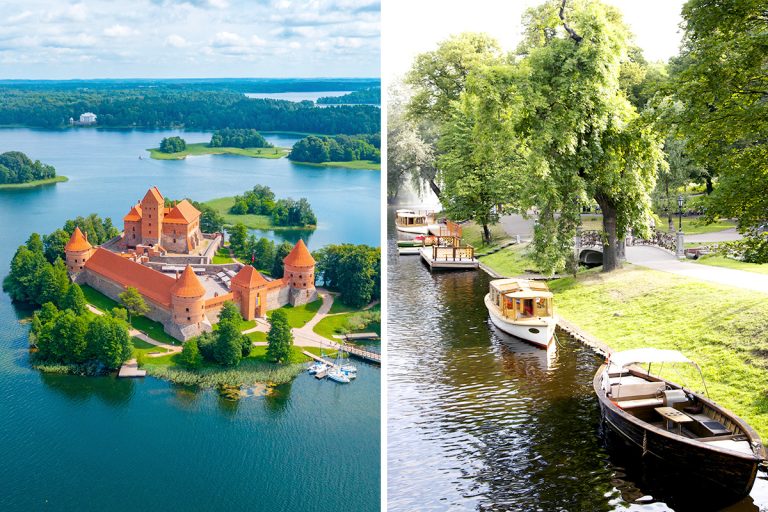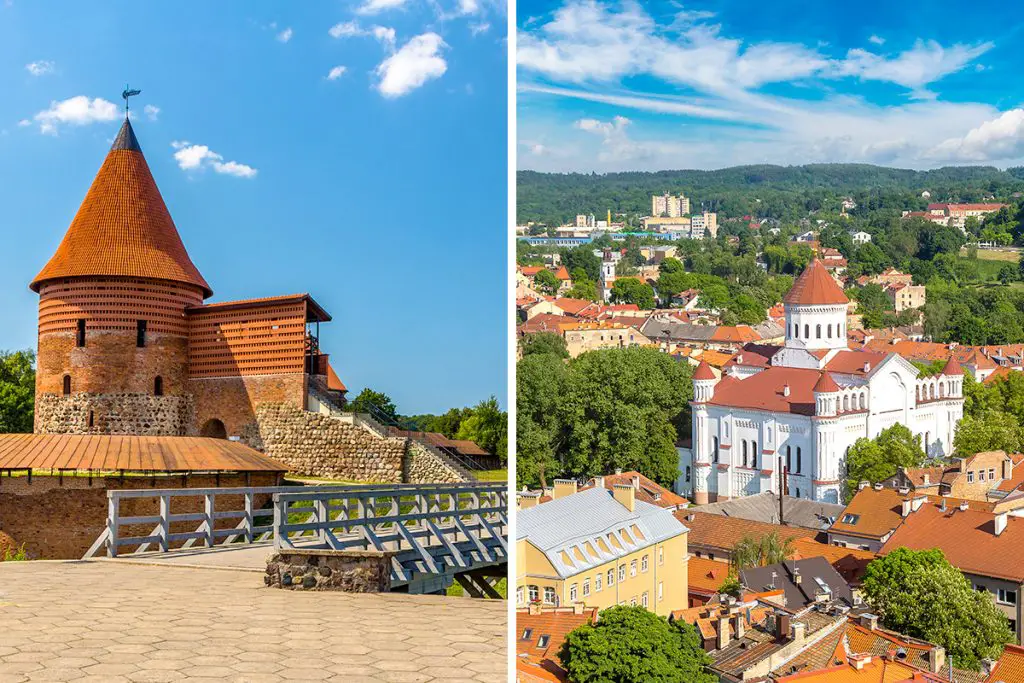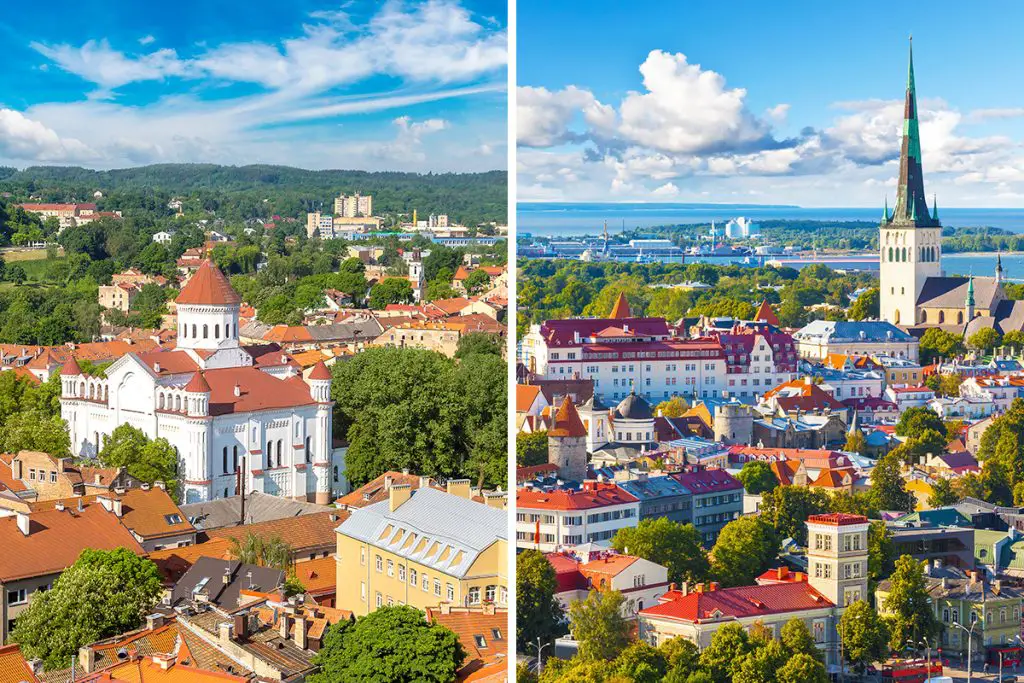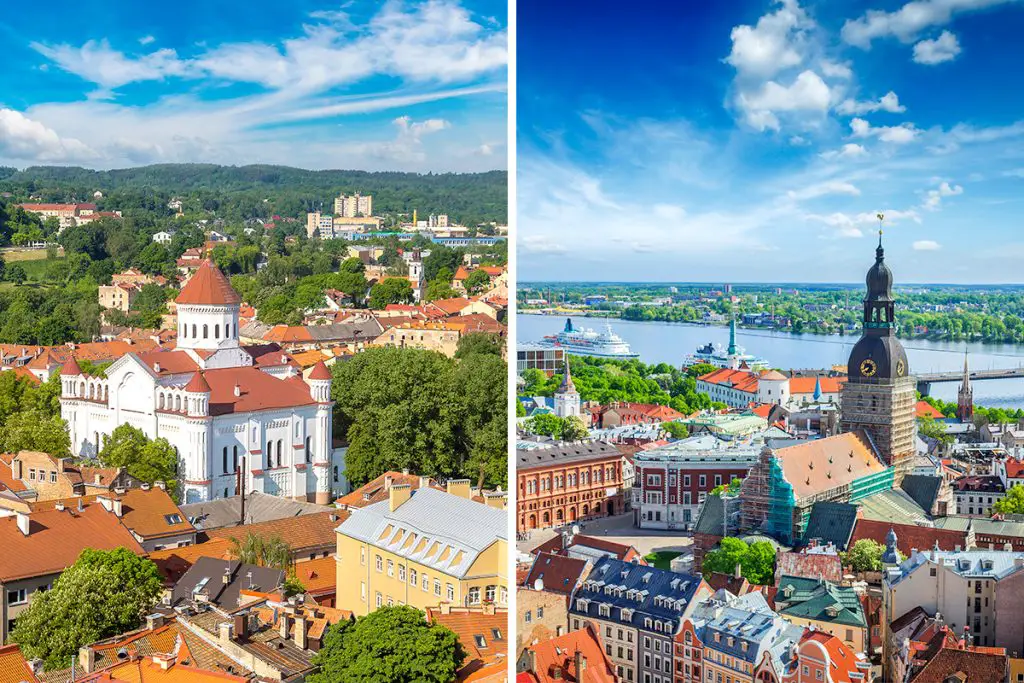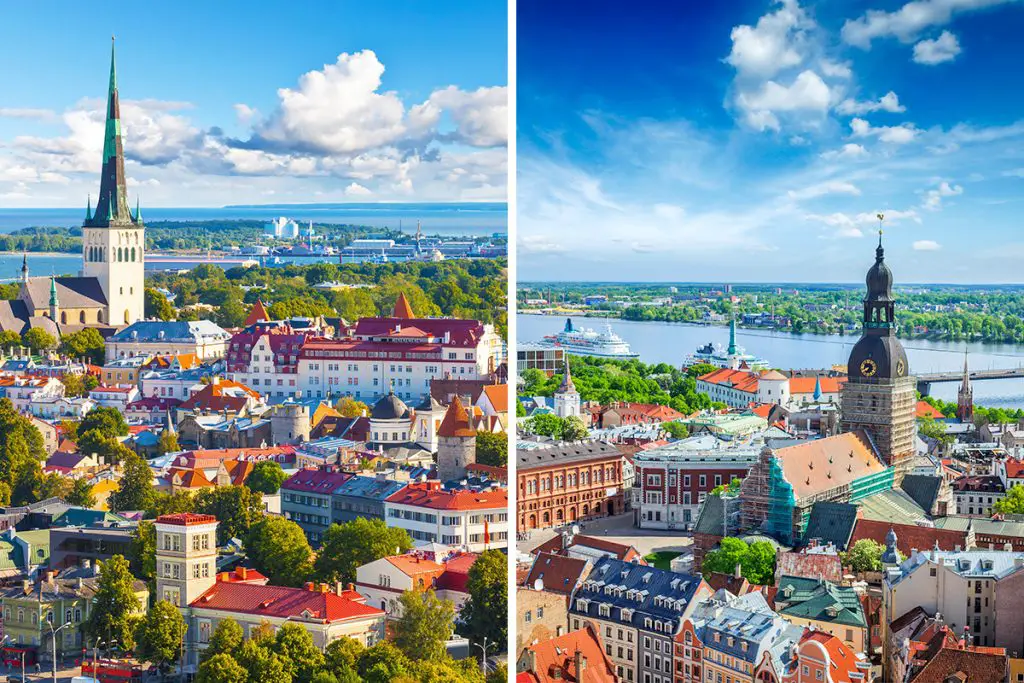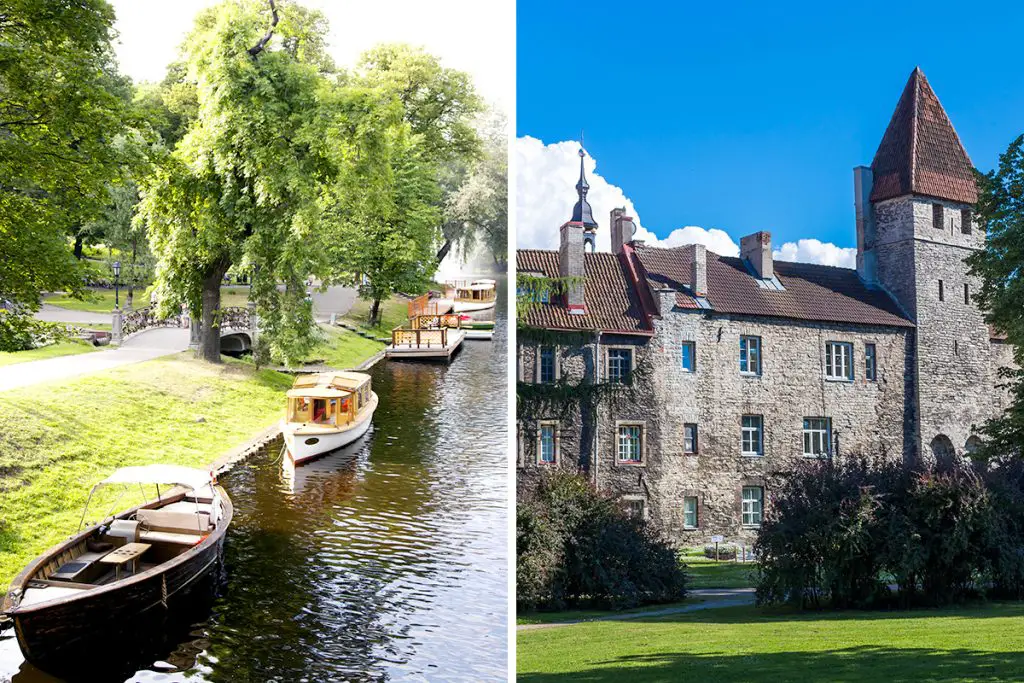Delving deeper, you uncover layers of history and cultural nuances that make each country distinct yet equally captivating. The story of Lithuania and Latvia is one of ancient legacies interwoven with modern aspirations. Your curiosity is piqued, and it’s hard to resist the allure of exploring further. Read on to discover the contrasting and comparable historical and cultural gems these Baltic neighbors have to offer.
History & Culture
When it comes to history and culture, Lithuania and Latvia have rich narratives that are both distinct and intertwined. Their stories have been shaped by centuries of various influences, from medieval times to the modern era.
Lithuania’s history is often heralded for its medieval glory. The country was once part of a grand duchy that stretched far and wide, covering modern-day Belarus and parts of Poland and Russia. Its ancient castles and old towns whisper tales of a bygone era that can transport you back in time.
The traditional songs, dances, and crafts further enrich Lithuania’s cultural fabric, giving you a taste of its enduring heritage.
On the flip side, Latvia’s historical journey is noted for its remarkable resilience. Despite numerous invasions and occupations, it has managed to retain its cultural identity. The Latvians are known for their love of singing, and their tradition of choral music is a testament to their cultural vitality.
Modern-day Latvia is a blend of the old and new, where ancient traditions coexist with contemporary lifestyles.
Comparing the cultural landscapes, Lithuania tends to lean more towards preserving its medieval roots, while Latvia embraces a mix of tradition and modernity. Both countries value their historical legacies and work tirelessly to keep their cultures vibrant and alive.
Yet, the approach toward modernity varies. Lithuania holds tight to its historic past, whereas Latvia navigates a path that melds the ancient with the contemporary. This difference in approach is reflected in their festivals, music, and overall cultural ethos.
In summary, Lithuania and Latvia offer unique historical and cultural experiences. While Lithuania immerses you in a medieval realm, Latvia provides a canvas where tradition and modernity paint a harmonious picture. This intrinsic difference in their historical and cultural outlooks might just be the tipping point in your decision between these two fascinating destinations.
Attractions & Activities
When it comes to engaging in eye-opening attractions and activities, Lithuania and Latvia both have rich offerings. However, their allure manifests in different forms, echoing their individual historical and cultural essences. Let’s delve into what each country has to showcase.
In Lithuania, the historic charm is palpable. The capital city, Vilnius, is home to a well-preserved medieval Old Town, a UNESCO World Heritage site, where you can roam around cobbled streets and marvel at Gothic, Renaissance, and Baroque architecture.
Further afield, Trakai Island Castle, situated in the midst of a serene lake, offers a picturesque retreat to delve into the country’s medieval past. For the active traveler, the Aukštaitija National Park offers a green haven for hiking and kayaking, revealing the natural beauty of Lithuania.
On the other hand, Latvia offers a blend of historic and modern attractions. In Riga, the capital, the architectural splendor of the Old Town, also a UNESCO World Heritage site, rivals that of Vilnius, but with a unique Art Nouveau twist.
Beyond the city, the verdant Gauja National Park invites explorers to its forest trails and medieval castles. For those interested in history, the solemn Salaspils Memorial Ensemble offers a poignant reminder of Latvia’s turbulent past.
While both countries boast stunning natural parks and historic cities, the types of activities available diverge slightly. Lithuania offers a more laid-back, historically centered exploration, while Latvia offers a mix of historical and natural adventures.
Moreover, the interaction with nature varies between the two. Lithuania’s calm lakes and dense forests provide a tranquil escape, while Latvia’s river valleys and forested landscapes offer a bit more of an adventurous outing.
In summary, the choice between Lithuania and Latvia boils down to personal preferences in attractions and activities. Whether you’re keen on delving deeper into a medieval past or exploring a blend of history and nature, both countries hold unique experiences waiting to be discovered.
Beaches
The allure of serene beaches is undeniable when considering a visit to Lithuania or Latvia. The Baltic Sea caresses the shores of both countries, offering a refreshing escapade. Let’s explore how each destination entices with its sandy stretches.
Lithuania’s coastline is shorter, stretching around 90 kilometers (56 miles), but it’s a haven of untouched beauty. The Curonian Spit, a UNESCO World Heritage site, is a highlight with its towering sand dunes and quaint fishing villages. Its peaceful ambiance is perfect for those looking to unwind by the sea.
Latvia, with a more extensive coastline of about 500 kilometers (310 miles), offers a variety of beach experiences. The beach at Jūrmala, a short drive from Riga, is popular for its soft golden sands and gentle waves, providing a lovely seaside retreat.
The nature of the beaches also reflects the broader cultural milieu. Lithuania’s quiet, unspoiled beaches resonate with its overall serene and historical ambiance. In contrast, Latvia’s beaches are more lively and accessible, echoing the country’s blend of tradition and modernity.
Furthermore, the accessibility to nearby attractions from the beaches varies. In Latvia, beach-goers can easily transition to exploring nearby urban or natural attractions, while in Lithuania, the beaches are more secluded, offering a more tranquil, undisturbed experience.
In summary, the beach experiences in Lithuania and Latvia are distinct yet equally captivating. Whether you prefer the calm and untouched beauty of Lithuania’s coast or the more lively and accessible beaches of Latvia, both promise a refreshing escape by the Baltic Sea.
Eating, Drinking & Nightlife
The culinary scene and nighttime festivities are integral aspects of experiencing the local culture in both Lithuania and Latvia. Each country has its unique flair in terms of food, drinks, and nocturnal activities. Let’s embark on a flavorful journey to discover what each destination offers.
In Lithuania, the eating scene is deeply rooted in traditional fare. Dishes like cepelinai (potato dumplings) and šaltibarščiai (cold beet soup) are staples that reflect the hearty and wholesome Lithuanian cuisine.
On the other hand, Latvia’s culinary palette is a blend of traditional and contemporary. While you can savor traditional dishes like grey peas with bacon, you’ll also find modern eateries offering global cuisine.
Venturing into the drinking culture, Lithuania has a long history of brewing, with beer being the drink of choice in many local taverns. The craft beer scene is burgeoning, and a visit to a local brewery is a must.
Latvia, too, enjoys a vibrant beer culture, with a wider variety of international brands available alongside local brews. The tradition of brewing is celebrated in both countries, each with its unique flavor profiles.
When the sun sets, the nightlife in Lithuania is more subdued compared to Latvia. Vilnius and Kaunas offer a range of cozy bars and clubs yet the atmosphere remains relatively relaxed. Latvia, particularly Riga, is known for its more lively nightlife scene with a plethora of bars, clubs, and live-music venues that stay open until the early hours.
In summary, whether you’re a food enthusiast, a beer connoisseur, or someone who enjoys a lively night out, both Lithuania and Latvia have something to offer. The choice between a more traditional or a vibrant contemporary experience is yours to make.
Shopping
The retail therapy experience in Lithuania and Latvia provides a window into the cultural ethos of these nations. Both have a range of shopping venues, yet they offer different vibes and products. Let’s explore the shopping landscape in these Baltic gems.
Lithuania offers a blend of modern shopping malls and quaint boutiques. In Vilnius and other cities, you’ll find shopping centers like Akropolis and Panorama offering a variety of international and local brands. Additionally, small boutiques provide a chance to purchase unique Lithuanian crafts and souvenirs, such as amber jewelry and linen products.
On the contrary, Latvia’s shopping scene is a mix of modernity and tradition. Riga hosts several large shopping malls like Spice and Alfa, where you can find a wide range of brands. Moreover, Latvia is famous for its Central Market, one of the largest marketplaces in Europe, where you can find fresh produce, local delicacies, and traditional Latvian products.
The types of products and the shopping atmosphere reflect the broader cultural demeanor of each country. Lithuania’s shopping experience tends to be more relaxed and traditional, while Latvia offers a bustling market scene alongside modern retail spaces.
Moreover, the availability of local crafts and traditional products is abundant in both countries, yet the emphasis on modern retail is more pronounced in Latvia.
In summary, the shopping escapades in Lithuania and Latvia provide different flavors of the local culture. Whether you’re interested in modern retail therapy or seeking unique traditional crafts, both destinations offer a fulfilling shopping experience.
Accommodation
When planning your visit to Lithuania or Latvia, finding a cozy place to stay is crucial. Both countries offer a range of accommodation options that cater to different preferences. Let’s unravel the distinct lodging experiences awaiting you.
In Lithuania, the accommodation spectrum is broad, with a mix of historic hotels, modern lodgings, and quaint guesthouses. For instance, Vilnius and Kaunas have a range of charming hotels nestled in their historic old towns, offering a quaint atmosphere.
Moreover, rural tourism is gaining popularity, with many choosing to stay in countryside homesteads to experience the traditional Lithuanian lifestyle.
On the other side, Latvia offers a similar blend of historic and modern accommodations. Riga’s old town is dotted with boutique hotels and modern apartments that offer a blend of comfort and a touch of Latvian culture. Moreover, countryside lodgings and spa resorts in areas like Jurmala provide a serene getaway.
Both countries have embraced the global trend of online rentals like Airbnb, providing a range of options from city centers to rural settings. This adds a modern touch to the accommodation scene, making it easier to find a place that suits your taste.
The hospitality in both Lithuania and Latvia is warm and welcoming. The hosts are known for their friendliness and willingness to ensure guests have a memorable stay.
In summary, whether you’re keen on soaking up history, enjoying modern comforts, or exploring rural charm, both Lithuania and Latvia offer a plethora of accommodation options to make your stay enjoyable.
Family-Friendliness & Children’s Activities
Embarking on a family adventure to Lithuania or Latvia promises a blend of educational and fun-filled experiences. Both countries cater well to young explorers and their families, albeit with different offerings.
In Lithuania, family-oriented activities often revolve around outdoor exploration and historical sites. Families can enjoy strolling through the medieval streets of Vilnius or exploring the fairy-tale Trakai Castle. Additionally, open-air museums like Rumsiskes provide a playful learning environment about traditional Lithuanian life.
Latvia, too, offers a rich tapestry of family-friendly activities. The capital, Riga, has many parks and interactive museums like the National History Museum of Latvia that can keep young minds engaged. Beyond the city, the Latvian countryside offers family-friendly farm stays and nature trails that provide a wholesome outdoor experience.
Both Lithuania and Latvia have a range of zoos, open-air museums, and nature parks that are perfect for families. The interactive learning experiences offered are not only fun but also educational, providing a wonderful way for children to learn about Baltic history and culture.
Moreover, the cities and larger towns in both countries are equipped with modern amenities, making it convenient for families with children of all ages.
In summary, Lithuania and Latvia are family-friendly destinations with a variety of engaging activities for children. Whether exploring historical sites, interacting with nature, or enjoying educational museums, families are sure to have a memorable experience in both countries.
Getting There & Getting Around
The Baltic charm of Lithuania and Latvia is easily accessible, yet the journey and the ease of exploring locally varies between the two. Here’s a look at how you can reach these countries and traverse through their scenic landscapes.
Getting to Lithuania and Latvia is fairly straightforward with international airports in Vilnius, Kaunas, and Riga offering flights from many European cities. The Vilnius International Airport (VNO) and Riga International Airport (RIX) are the main gateways, with several airlines providing regular services.
Once in Lithuania, the public transportation system is efficient with a network of buses and trolleys in the cities. For a more scenic journey, the train routes connect major cities and offer a picturesque view of the Lithuanian countryside. The distances between cities are fairly short, making it convenient to explore different regions.
In Latvia, its public transportation also includes buses and trams that are reliable and cover a wide area within and outside Riga. The train system, albeit less extensive than in Lithuania, still provides a comfortable travel option to major towns and regions.
Both countries also offer the option of renting a car, which provides the freedom to explore at your own pace. The road conditions are good, and the scenic drives along the countryside are truly rewarding.
In summary, reaching and exploring Lithuania and Latvia is hassle-free with multiple modes of transportation available. Whether you prefer the independence of a car rental or the local experience of public transport, both countries cater to different travel preferences ensuring a smooth Baltic adventure.
Weather
The weather plays a pivotal role in planning your visit to Lithuania or Latvia. Both countries experience a temperate climate, with distinct seasons offering different hues and experiences. Let’s delve into the meteorological nuances of these Baltic neighbors.
Lithuania experiences cold winters and mild summers. The winter, from December to February, sees temperatures often dropping below freezing, averaging between -9°C to -1°C (16°F to 30°F).
Snow blankets the country, adding a mystical charm to the medieval architecture. The summer, from June to August, is pleasant with temperatures ranging between 11°C to 22°C (52°F to 72°F), making it an ideal time to explore the outdoors.
Similarly, Latvia has chilly winters and warm summers. The winter temperatures hover between -8°C to -2°C (18°F to 28°F) from December to February. The summer, on the other hand, is slightly warmer than in Lithuania, with temperatures ranging from 12°C to 24°C (54°F to 75°F) from June to August.
Both countries experience the most rainfall during the autumn months of September to November, although it’s spread fairly evenly throughout the year. The skies during these months are often overcast, lending a gray hue to the landscape.
The spring, from March to May, is a delightful time in both Lithuania and Latvia, as the snow melts and flowers bloom, painting the countries with vibrant colors.
In summary, whether you prefer the serene snowscape of winter or the warm, exploratory freedom of summer, both Lithuania and Latvia offer diverse weather experiences. Choosing the right season for your visit can enhance your Baltic adventure immensely.
Safety
Safety is a paramount concern when traveling to new destinations. Both Lithuania and Latvia have built a reputation of being secure and friendly countries for visitors.
In general terms, both countries have low crime rates and are considered to be safe for travelers. Petty crimes like pickpocketing can occur in crowded areas, but with a bit of vigilance, you can easily avoid such scenarios.
One unique non-crime-related safety aspect to consider is road safety. Both countries experience icy road conditions during winter, which could pose challenges for drivers unfamiliar with such conditions. Ensuring your vehicle is winter-ready and exercising caution is advisable.
Moreover, both nations have robust healthcare systems. In case of a medical emergency, there are well-equipped hospitals and clinics to provide necessary care.
Health and travel insurance are always recommended to cover any unexpected situations, ensuring a stress-free visit.
In summary, with a bit of preparation and awareness, you can ensure your stay in Lithuania or Latvia is safe and enjoyable. Their welcoming atmosphere and low crime rates make them appealing destinations for travelers.
Cost
Exploring the cost of a vacation to Lithuania or Latvia helps in budgeting and planning your trip effectively. Both countries are known for being affordable destinations in the Baltic region, offering rich experiences without burning a hole in your pocket.
In Lithuania, you’ll find that meals at local restaurants are quite affordable. A meal might cost around €10 ($10.50-$11.00). Accommodation ranges from budget-friendly hostels to more upscale hotels, with a typical night at a mid-range hotel costing about 40-129 USD.
Transportation is also cost-effective, with public transit fares around €1 ($1.00-$1.50) for a single journey within the city.
Latvia, on the other hand, shares a similar cost spectrum. Dining out at local restaurants would cost around €10 ($10.50-$11.00). Lodging prices are comparable to Lithuania, with a night at a mid-range hotel around 57-126 USD. Public transportation fares are slightly lower, costing about €0.90 ($0.50-$1.00) for a single journey within Riga.
Both countries offer a range of prices in terms of food, lodging, and transportation, catering to both budget and luxury travelers. The overall cost of living and traveling is quite reasonable, making them attractive destinations for a wide array of travelers.
Which Is Better – Lithuania or Latvia?
The Baltic charm of Lithuania and Latvia each offers a unique blend of experiences that cater to a variety of interests. The tale of two neighboring countries unveils a rich tapestry of history, culture, and modern-day allure, each with its distinct flavor. Let’s encapsulate the journey through these captivating destinations based on the diverse facets explored earlier.
The historical and cultural panorama in Lithuania is heavily tinged with medieval resonance, offering a trip down the annals of time. Latvia, on the other hand, marries its historical essence with modern-day vibrancy, offering a more contemporary cultural experience.
The dichotomy between the medieval charm of Lithuania and the modern-traditional blend of Latvia provides a discerning choice for history and culture enthusiasts.
When it comes to attractions and activities, Lithuania invites a laid-back exploration predominantly centered around its historical edifices and serene natural spots.
Latvia, conversely, extends a more adventurous allure with a mix of historical exploration and nature adventures. Your penchant for either relaxed or more active exploration might sway your choice between these Baltic neighbors.
The beach experiences diverge with Lithuania offering a calm and untouched shoreline, while Latvia provides a more lively beach environment. The choice here hinges on your preference for a tranquil retreat or a more vibrant seaside escapade.
The culinary and nightlife scene also presents a dichotomy. Lithuania offers a more traditional culinary experience and a subdued nightlife. In contrast, Latvia’s food scene is a blend of traditional and modern, with a lively nightlife that resonates well with the energetic night owl.
Shopping in both countries provides a window into their cultural ethos, with Lithuania offering a more traditional shopping experience and Latvia a bustling market scene alongside modern retail spaces. Your shopping preferences might find a better match in the quaint boutiques of Lithuania or the bustling markets of Latvia.
In a nutshell, your choice between Lithuania and Latvia boils down to personal preferences. If a serene, historical, and traditional experience resonates with you, Lithuania is your go-to destination. On the flip side, if a blend of history with modernity, coupled with a lively atmosphere appeals to you, Latvia awaits with open arms. Each country holds its unique charm and a promise of unforgettable memories.

